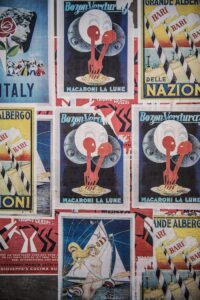Traveling through Italy becomes a far richer experience when you make the effort to learn and use a few key Italian phrases. While many Italians, especially in tourist areas, speak at least some English, attempting their language is a simple but powerful gesture of respect. Words like “Buongiorno” (Good morning), “Ciao” (Hi/Bye), “Per favore” (Please), and “Grazie” (Thank you) go a long way in day-to-day interactions. These basic expressions can turn a routine transaction into a more personal exchange.
When tourists use even a few Italian words, locals often respond warmly. You may notice a smile, a friendlier tone, or even a bit of helpful encouragement. Italians are proud of their language and culture, and they appreciate it when visitors show interest, even imperfectly. I have found, that same friendly encouragement even when I am WILDLY wrong and as a result,, they leave completely bewildered bycwhat I could possible mean. Eventually, when I inquire, “Conosci?” Only then they sheepishly shake their head no… with a soft smile!
A polite “Mi scusi” (Excuse me) or “Dov’è…?” (Where is…?) can help break the ice, especially in smaller towns where English may not be widely spoken. Phrases like “Parla inglese?” (Do you speak English?) show humility and help ease into a conversation without assuming mutual fluency.
In restaurants, “Il conto, per favore” (The bill, please) or “Posso avere…?” (Can I have…?) makes ordering more engaging, and often leads to better service or even a friendly recommendation from the waiter.
Ultimately, using Italian signals curiosity and courtesy. It shows you’re not just passing through, but actively engaging with the culture. Locals tend to respond with patience, kindness, and sometimes even surprise. These small exchanges create meaningful moments that go beyond sightseeing…they build connection. And in a country where human warmth is part of daily life, those little efforts are almost always returned with a big smile.ne using the most basic





